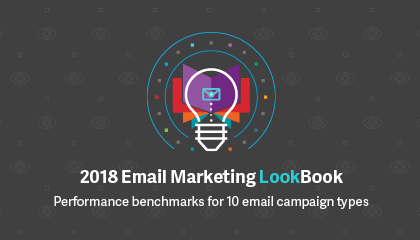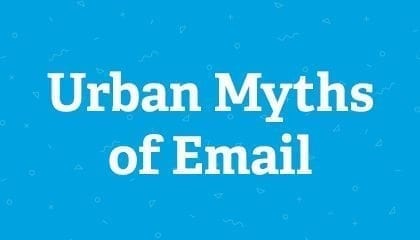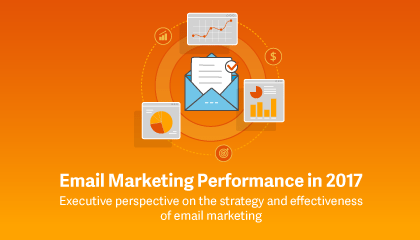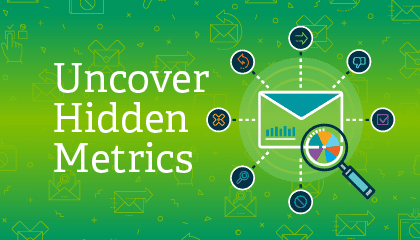Metrics 101
This 10-question quiz will delve into general email marketing. All questions are multiple choice and there’s no essay portion, but watch out for trick questions! At the end of the quiz, you’ll get a score and we’ll suggest some recommended reading. Ready to go? Sharpen those #2 pencils, Email Scholar… quiz time begins now.
1. How is the spam placement rate calculated?
-
AThe number of emails delivered to the spam folder divided by total emails opened
-
BThe number of emails delivered to the spam filter divided by total emails sent
-
CThe number of emails sent minus the number of emails subscribers marked as spam
-
DThe number of emails delivered by SPAM/Hormel Food Corporation regarding their meat products
2. True or False - The spam placement rate average for all industries decreased in the last year.
-
AFalse
-
BTrue
-
CN/A - It stayed the same
-
DTrick question! The spam placement rate isn’t calculated for industries
3. The read rate of an email is calculated….
-
AThe same way as the “open” rate
-
BBy measuring the amount of people who had their eyes open while the emails loaded using webcam data
-
CAs a way to measure what images were downloaded in an email
-
DAs the number of emails marked as “read” out of all emails sent
4. A high deleted before reading rate may signal
-
AA large number of trash cans in the building where the email is opened
-
BHigh satisfaction with your email campaign
-
CDisinterested subscribers
-
DYour subscribers may have changed email addresses and not updated you
5. The “reply rate” is calculated…
-
ABy dividing the total number of replies your email receives by the number of emails sent
-
BBy totaling the number of out-of-office responses received after an email is sent
-
CBy dividing the total of number of replies your email receives by the number of opened emails
-
DBy dividing the number of unsubscribes by the number of total replies received
6. The forward rate is calculated as the number of emails forwarded on to others out of total emails sent. Which of these statements is not true?
-
AForwards are generally sent when an email is interesting enough to share
-
BForwards are usually scams passed along by well-meaning mothers to their adult children
-
CA high forward rate shows strong subscriber engagement
-
DThe majority of industries saw increases in their average forward rates from 2016 to 2017
7. The complaint rate is a direct signal that:
-
AReturn Path’s computer doesn’t recognize “compliant” as a misspelling, which is what they really meant
-
BYour content is unwanted
-
CYour subscribers want more of your emails
-
DYour subscribers should switch mailbox providers
8. The “this is not spam” rate is…
-
AEvery email sent on a daily basis that is not from SPAM/Hormel Food Corporation regarding their meat products
-
BThe opposite of the rescue rate
-
CA poor indicator of engagement since people may click it accidentally
-
DCalculated as the number of times a subscriber marks your message as “not junk” divided by the number of emails delivered to the spam folder
9. Tracking engagement-based metrics (which measure how subscribers interact with your email program) are:
-
APart of what your ESP should be doing
-
BNot necessary because open rates are the only important metric
-
CCritical in evaluating the success of an email program
-
DOnly useful if you are a B2C company selling jewelry
10. Which of the following is not true about deleted before reading rates?
-
ASubscribers that delete your emails without reading probably need to receive twice as many emails from you so that they can see how good they are
-
BA high deleted before reading rate is a sign of a failed campaign
-
CDeleting emails before reading signals to your mailbox provider that the content is unwanted
-
DSubscribers ignored messages at a slightly higher rate in 2017 than 2016
Congratulations! You’ve earned top marks in your first class.
You have a strong understanding of the marketing metrics that brands need to succeed. Your solid knowledge base enables you to optimize your email program and drive ROI for your brand – but because things change quickly, make sure to keep up on your studies. Check out some of the following resources to help you further expand your email expertise.
You gave it the old college try… didn’t you?
A strong understanding of marketing metrics is important for every marketer. By knowing how email works and what it is capable of, you can build a strong successful, email program that helps boost your brand and increase revenue. Restart your education with these helpful resources. And maybe try flash cards next time.



